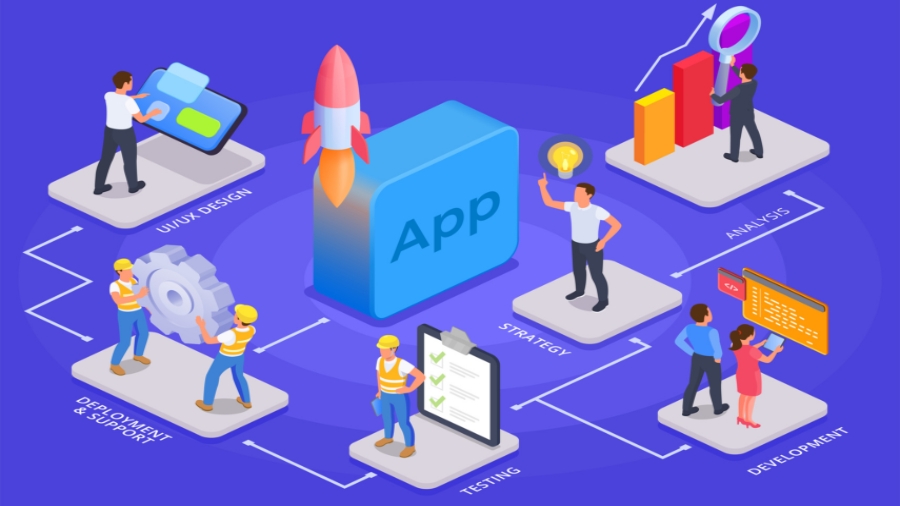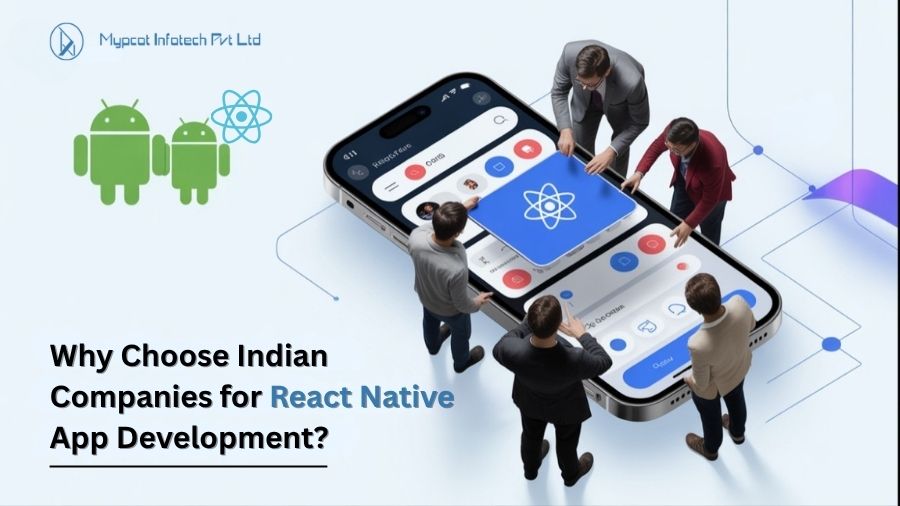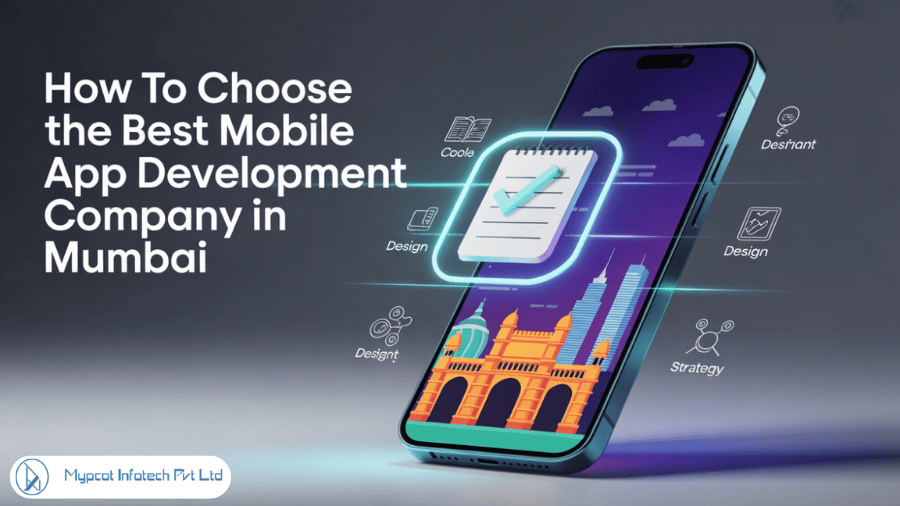Developing your first mobile app is an exciting step, but it’s also a challenging experience. It’s common among developers, you’re not alone in facing obstacles. Even most of the first-time developers working with a mobile app development company in India make mistakes that could significantly impact the success of their mobile applications.
There are multiple pitfalls to avoid, from overlooking market research to support that comes after launch. In this blog, we’re going to explore 10 common mistakes that new developers frequently make. Furthermore, we’ll provide practical tips on how to avoid them easily in order to ensure your development journey goes smoothly and successfully.
Table of Contents
ToggleMistake #1: Not Conducting Market Research
Skipping the thorough market research is one of the most common mistakes in mobile app development. Your application can’t meet user expectations and stand out if you’re not aware of the target audience, or even if you’re never studying your competitors.
When you conduct thorough market research, it helps you understand what users actually want, which features matter, and how to stand out. You can use some tools like App Annie and Sensor Tower, these tools offer insights into trends, user behaviour, and competitor strategies. It will help you build smarter and more successful apps from the beginning.
Mistake #2: Ignoring Platform Guidelines (iOS/Android)
Ignoring platform guidelines is another mistake that must be considered. It can lead to app rejection or even a poor user experience. Both platforms, Apple and Google, have a clear design along with development standards like Apple’s Human Interface Guidelines and Google’s Material Design.
These ensure applications run smoothly, look consistent, and are easy to use. Don’t try to ignore guidelines; follow them to get your apps approved faster and make it more intuitive for users to use each platform.
Mistake #3: Overloading with Features at Launch
Another mistake is loading too many features in the app at once. This practice can confuse your users, delay development, and increase cost. Instead, focus on building a Minimum Viable Product (MVP). It’s a simple version of your app that delivers its core value.
By launching the most essential feature, you can easily test your idea, collect user feedback, and improve your app step-by-step without overwhelming your audience or your budget.
Mistake #4: Underestimating UI/UX Design
Several developers fail to recognize the importance of UI/UX design approaches for their software applications. When you overlook UX and UI aspects, your beneficial application becomes destined to fail. Users perform initial assessments of apps very rapidly therefore, interfaces that appear complicated or unresponsive will cause them to abandon your application.
The appearance and design of your app interface will create a neat and intuitive navigation system through a better User Interface. Although UX (User Experience) tackles the smooth interaction flow for users with their applications, thus ensuring their retention and return behavior. Your investment in UI/UX design elements stands as an investment toward achieving application success.
Mistake #5: Not Testing Enough
Not testing your application thoroughly before launch is a critical mistake. Bugs, crashes, or even poor performance could significantly ruin the user experience and then hurt your app’s reputation.
It’s crucial to run different types of tests, like usability testing in order to ensure a smooth user experience, device compatibility testing to check performance across multiple screens and operating systems, and security testing to protect user data.
Always use tools like Firebase Test Lab, BrowserStack, and TestFlight to catch issues earlier. When you perform various checks, it ensures your apps run reliably and deliver a quality experience.
Also read this : Top Reasons Why India Leads in Mobile App Development Outsourcing.
Mistake #6: Lack of a Clear Monetization Strategy
After developing a superior application that stands out through its characteristics, what would be its method to generate revenue streams? Many developers start an app without established revenue sources, which eventually causes missed earnings and deteriorates user loyalty rates.
Your revenue strategy needs to fit both your application focus and target users because it can be built through freemium models alongside in-app advertising and subscriber fees or single-time payment options.
Developing a monetization strategy requires creators to combine user satisfaction with profitable methods in order to achieve success. Do not follow the path of other developers who make this error. Early planning enables steady earnings which results in both excellent user satisfaction and smooth performance.
Mistake #7: Not Planning for Scalability
It’s very enjoyable to see your user base grow, but what if your application isn’t built to scale and growth? It can lead to crashes, slow loading, or even system failure. Several applications break down under unexpected demand as they didn’t plan ahead.
To avoid this one, you need to use a scalable backend structure and reliable cloud services while focusing on performance optimization. If you plan for scalability, your app can handle growth seamlessly, no matter if it’s 100 or even 100,000.
Mistake #8: Ignoring App Store Optimization (ASO)
Even if your application is the best, it can go unnoticed without proper App Store Optimization (ASO). ASO helps you improve your app’s visibility along with ranking in the App Store, and brings more organic downloads.
When it comes to optimization for the app store, it includes using the right keywords in your title and description, adding high-quality screenshots along with videos, and encouraging positive reviews while keeping your listing updated.
Mistake #9: No Post-Launch Support Plan
Launching your app is just the beginning. Some developers forget to plan for what happens next. If you make this mistake, users can quickly lose trust and uninstall your application. Without regular updates, bug fixes, as well as active customer support, your application can’t be successful.
You have adopted a strong post-launch strategy in order to keep your app relevant, stable, and user-friendly. Monitoring performance, addressing feedback, along rolling out improvements are essential in order to keep users engaged and satisfied long after the launch date.
Mistake #10: Not Collecting User Feedback
Another mistake is not collecting user feedback. It can be a missed opportunity for growth. User feedback offers a valuable insight into what’s working, what’s not, along what users want next. You can make smarter decisions just by setting up feedback loops.
Use tools like Survicate, Instabug, or Google Forms in order to collect reviews, suggestions, and in-app feedback. Always listen to your users, as it’s one of the best ways to build a successful app.
Conclusion
Developing your first mobile app can be overwhelming, but when you avoid these common mistakes, it can significantly boost your chances of success. Every step matters, from research to post-launch support.
Partnering with a trusted mobile app development company in Mumbai can make the process seamless. These experienced custom mobile application developers in India understand what it takes in order to build a scalable, user-friendly app.











